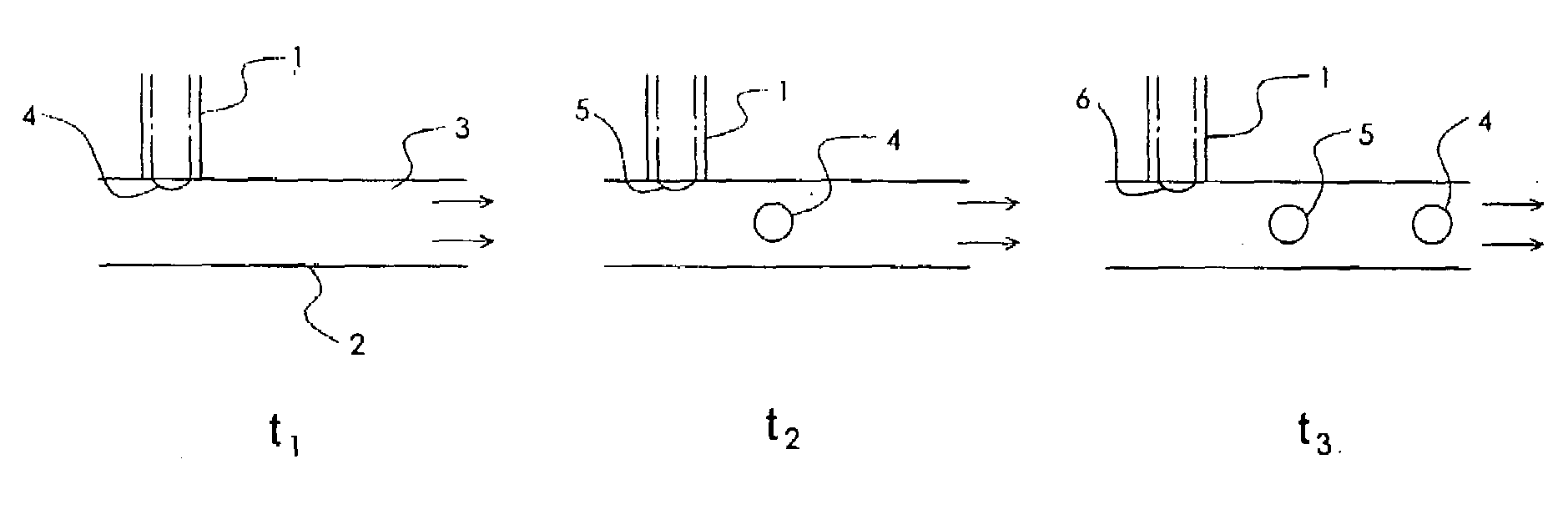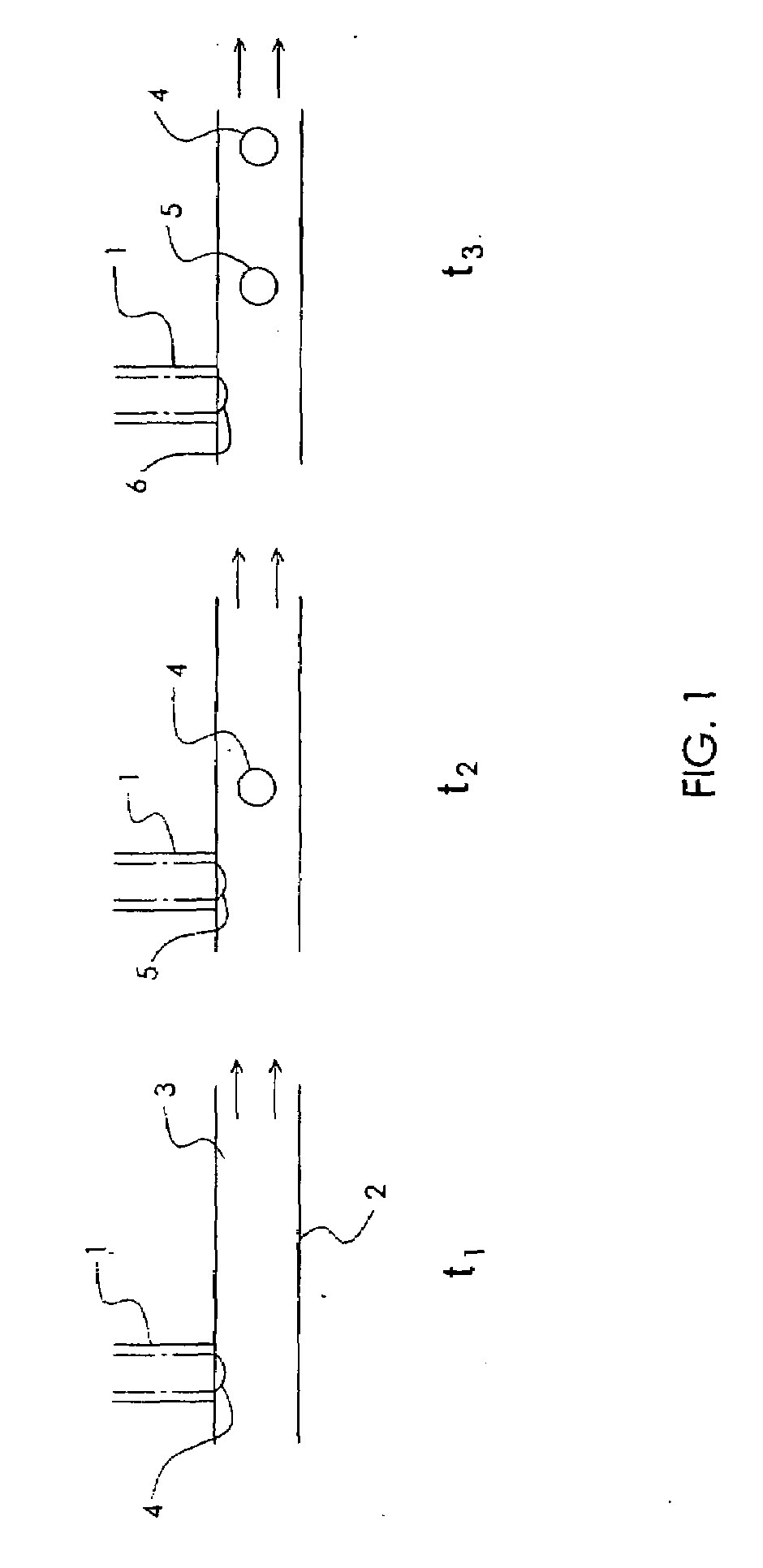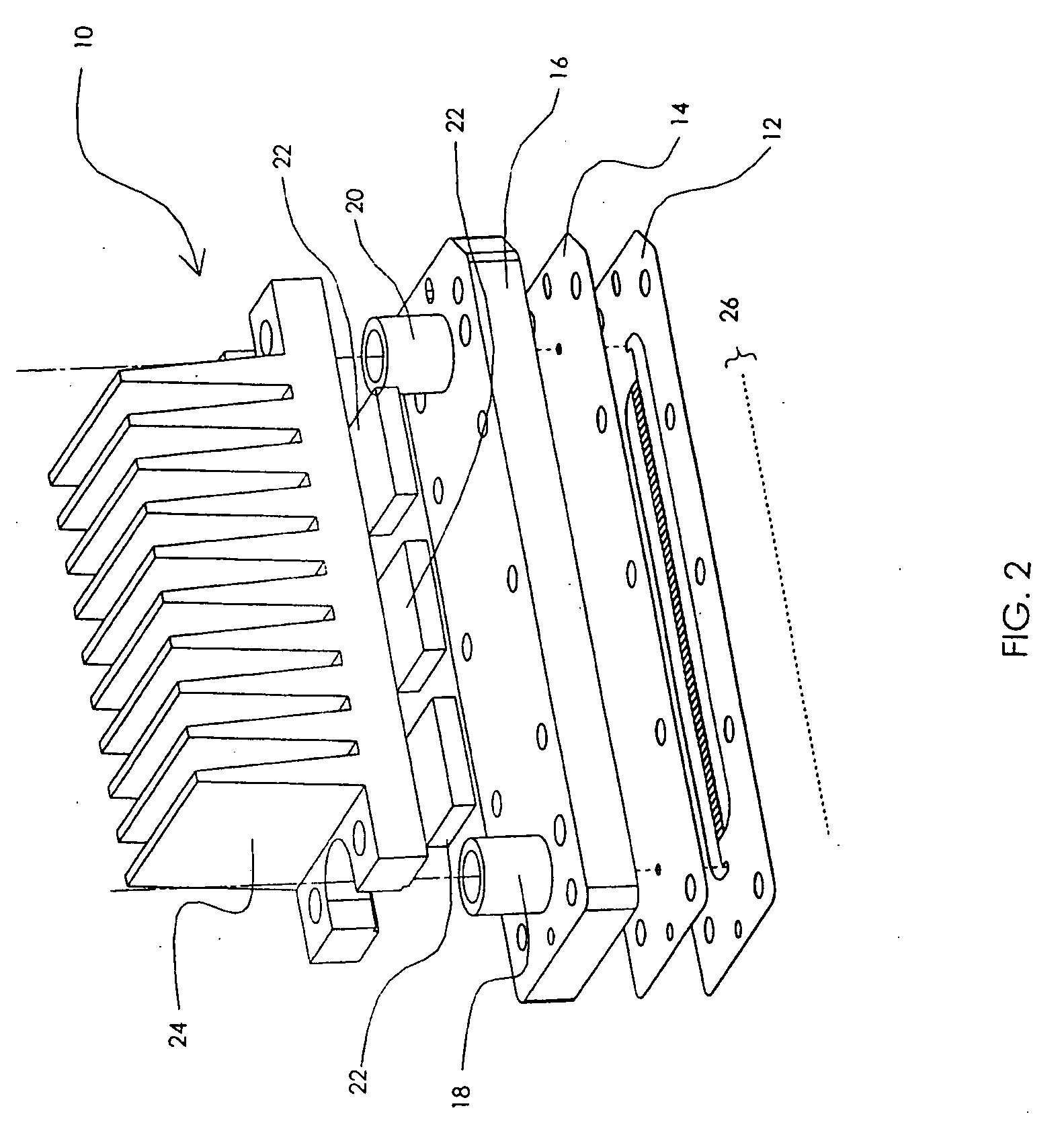Uniformly sized liposomes
a liposome, uniform technology, applied in the field of liposomes, can solve the problems of drug delivery technology not keeping pace with target identification and novel compound synthesis, limited clinical applications of these compounds, and high cost of drug delivery
- Summary
- Abstract
- Description
- Claims
- Application Information
AI Technical Summary
Benefits of technology
Problems solved by technology
Method used
Image
Examples
example 1
Uniformly Sized Phospholipid Liposomes
[0071]A droplet generator having 15 micrometer diameter nozzles generates droplets that are 10 pL in diameter and will divide up a liter of chloroform into 1e11 droplets. It will make 1e11 100 nm liposomes. A lipid occupies about 0.4 nm in area in a single layer in a membrane. A 100 nm diameter liposome has an outer (1 / 2 bilayer) membrane area of 31,400 sq nm. Thus, there are 78,500 lipids in the outer layer. The bilayer membrane is about 5 nm thick, and the inner spherical layer is thus 90 nm in diameter. The inner layer has 25,400 sq nm and thus 63,500 lipid molecules in it. There are therefore 142,000 lipids in this 100 nm liposome.
[0072]To make 1e11 100 nm liposomes, 1e11×142,000 lipid molecules are added to one liter of chloroform, with stirring. The molecular weight of a certain phosphatidylethanolamine (C41H83NO8P) is 749.07), therefore [(1e11)(142,000)(749.07) / (6.022e23)]=0.0000177 grams of lipids are used to make a liter of 2.3e-8 M sol...
PUM
| Property | Measurement | Unit |
|---|---|---|
| Fraction | aaaaa | aaaaa |
| Fraction | aaaaa | aaaaa |
| Fraction | aaaaa | aaaaa |
Abstract
Description
Claims
Application Information
 Login to View More
Login to View More - R&D
- Intellectual Property
- Life Sciences
- Materials
- Tech Scout
- Unparalleled Data Quality
- Higher Quality Content
- 60% Fewer Hallucinations
Browse by: Latest US Patents, China's latest patents, Technical Efficacy Thesaurus, Application Domain, Technology Topic, Popular Technical Reports.
© 2025 PatSnap. All rights reserved.Legal|Privacy policy|Modern Slavery Act Transparency Statement|Sitemap|About US| Contact US: help@patsnap.com



